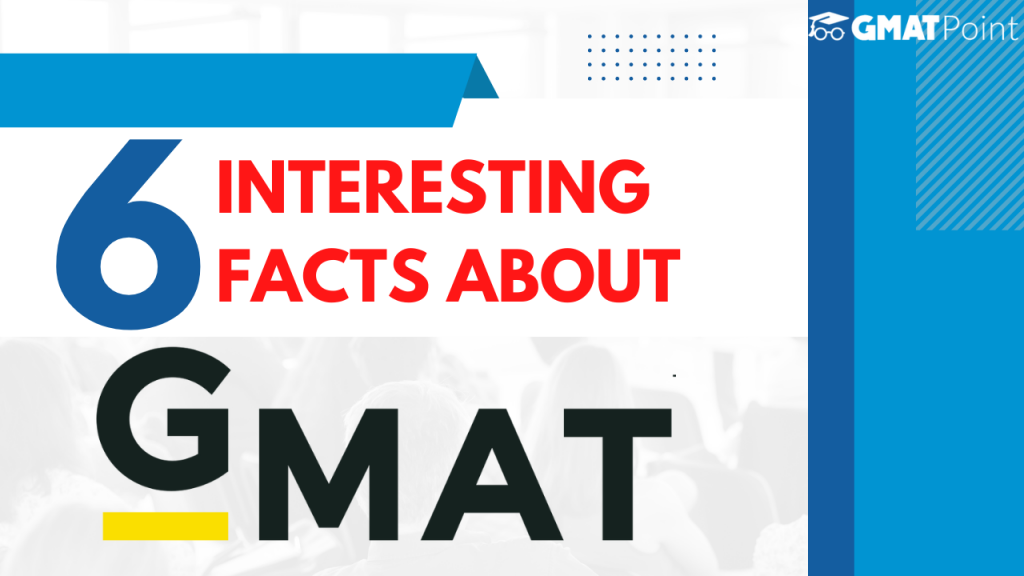Facts About The GMAT That You Should Know Before Taking The Exam
The Graduate Management Admissions Test (GMAT) is a standardized exam designed by the Graduate Management Admissions Council (GMAC) to assess the potential of individuals seeking admission into a graduate business school. If you are planning on going abroad to study in any of the top B-Schools across the world for your MBA, there are a few facts you should know about the GMAT before taking the test.
Take Free GMAT 2023 Daily Targets
Subscribe To GMAT Preparation Channel
1. Eligibility Criteria
GMAC sets no strict eligibility criteria for taking the GMAT, but it is recommended that you have a bachelor’s degree or are pursuing one.
2. Purpose of GMAT
The GMAT is designed to evaluate your critical thinking, problem-solving, and analytical writing skills and your ability to apply these skills in real-world business situations. It also tests how well you can handle pressure in a time-bound environment. This information about your test performance helps graduate business schools make informed decisions on admissions.
3. B-Schools Accepting the GMAT
- More than 7700 programs across 2400+ universities accept the GMAT score for admissions. Top Indian institutes like the Indian School of Business (ISB) Hyderabad and MDI Gurgaon also accept the GMAT scores as a part of their admissions. Check out this article to know which courses in which top institutes in India accept the GMAT.
- More than 150,000 students take the GMAT annually exclusively to apply to MBA programs worldwide. Also, a high proportion of the students enrolled in the top B-Schools around the world have taken the GMAT exam.
- You can take the GMAT upto eight times (the lifetime limit). However, there must be a gap of 16 days between two successive GMAT attempts. Also, you can only attempt the GMAT up to five times a year. Your GMAT score is valid for five years after you have taken the exam.
- Most graduate business schools only consider the highest score in their admission decisions.
4. Format of the GMAT
The GMAT consists of four sections:
- Quantitative Reasoning,
- Verbal Reasoning,
- Analytical Writing Assessment,
- Integrated Reasoning
- The test is computer-adaptive and is approximately three hours long.
- Out of the four sections, only two sections, namely the Quantitative and Verbal Reasoning sections, contribute to the final GMAT score. Both of these sections are computer adaptive, which means that your next question will depend on your response to the previous question.
The final GMAT score is on a scale of 200-800, with higher scores indicating a higher level of aptitude. The final GMAT Scores are reported in increments of 10.
| Subject Name | No. of Questions | Points | Time Limit |
| Quantitative Reasoning | 31 | 6 – 51 | 62 mins |
| Verbal Reasoning | 36 | 6 – 51 | 65 mins |
| Integrated Reasoning | 12 | 1 – 8 | 30 mins |
| Analytical Writing Assessment | 01 | 0 – 6 | 30 mins |
5. Syllabus of the GMAT
The four sections of the GMAT contain questions on the following:
Verbal Reasoning
- This section measures your ability to read and understand written material, as well as your ability to analyze and evaluate arguments. You will have 65 minutes to complete this section.
- Questions are based on: Sentence Correction (SC), Critical Reasoning (CR), Reading Comprehension (RC).
Quantitative Aptitude
- This section measures your ability to understand, analyze, and solve mathematical problems.
- Questions are of two types: Problem-Solving (PS), and Data Sufficiency (DS).
- Questions come from Arithmetic & Number System, Algebra, Geometry and Modern Math. All the quant questions are based on high school-level mathematics.
Integrated Reasoning
- This section measures your ability to analyze and interpret complex data, such as charts, graphs, and tables. You will have 30 minutes to complete this section. Note that this section is not computer-adaptive and is not counted in your final GMAT Score.
Analytical Writing Assessment (AWA)
- This section measures your ability to analyze an argument and write a clear, concise, and well-organized essay. You will have 30 minutes to complete this section. The AWA section is also not counted in your final GMAT Score.
- It would help if you looked at the complete syllabus of the GMAT to get a better idea of what could be asked in the exam.
6. Preparation Material for the GMAT
- The Official Guide for GMAT by GMAC provides detailed information about the structure and format of the GMAT, as well as sample questions and practice tests. The guide is updated annually to reflect the latest changes and updates to the GMAT exam.
- You should definitely check out GMATPoint if you want to prepare for the GMAT. It provides comprehensive information regarding the GMAT and also provides GMAT Daily Targets (free GMAT daily tests), in which you
- get five questions of quants and verbal sections daily with video solutions. It is an excellent resource for practising GMAT-level questions and maintaining consistency during GMAT preparation.
- Now that you know about the GMAT, you should start preparing for it. Go to GMATPoint Daily Targets and try out the GMAT level questions for free and watch videos on GMAT to know how to start preparing for it.
If you are starting your GMAT preparation from scratch, you should definitely check out the GMATPOINT
